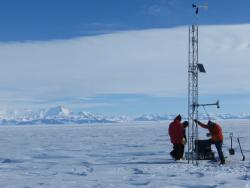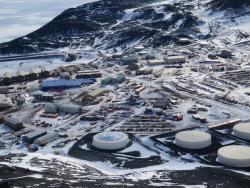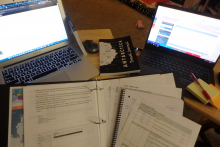What Are They Doing?

The Antarctic Automatic Weather Station network provides a greater understanding of the surface meteorology and climatology throughout the continent of Antarctica. The AWS network spans the Ross Ice Shelf, Ross Island, West Antarctica, East Antarctica, and the South Pole. Since some of the AWS have been working for over 30 years, we can begin to understand the climate over many regions of Antarctica.
Where Are They?

Latest Journals

Dr. Matthew A. Lazzara is an Associate Scientist and Research Meteorologist at the Antarctic Meteorological Research Center (AMRC), Space Science and Engineering Center (SSEC), University of Wisconsin–Madison (UW–Madison). He is presently the Principal Investigator of the Antarctic Automatic Weather Station Program. Dr. Lazzara is also a faculty member and Department Chair in the Department of Physical Sciences, School of Arts and Sciences, at Madison Area Technical College. There he teaches courses on weather & climate and climate & climate change. He’s research work focuses on observing the Antarctic from the surface and from satellites to gain an understanding of how Antarctic weather and climate behaves. Dr. Lazzara has deployed to Antarctica 10 times in the last 23 years.

Lee Welhouse is an Instrument Technician at the Antarctic Meteorological Research Center (AMRC), Space Science and Engineering Center (SSEC), University of Wisconsin-Madison (UW-Madison). He is a co-Principal Investigator of the Antarctic Automatic Weather Station (AWS) Program. His primary role is designing, building, and maintaining the AWS systems. His research work has been on El Nino and La Nina teleconnections on Antarctica. He has deployed to Antarctica 10 times over the past 11 years.



